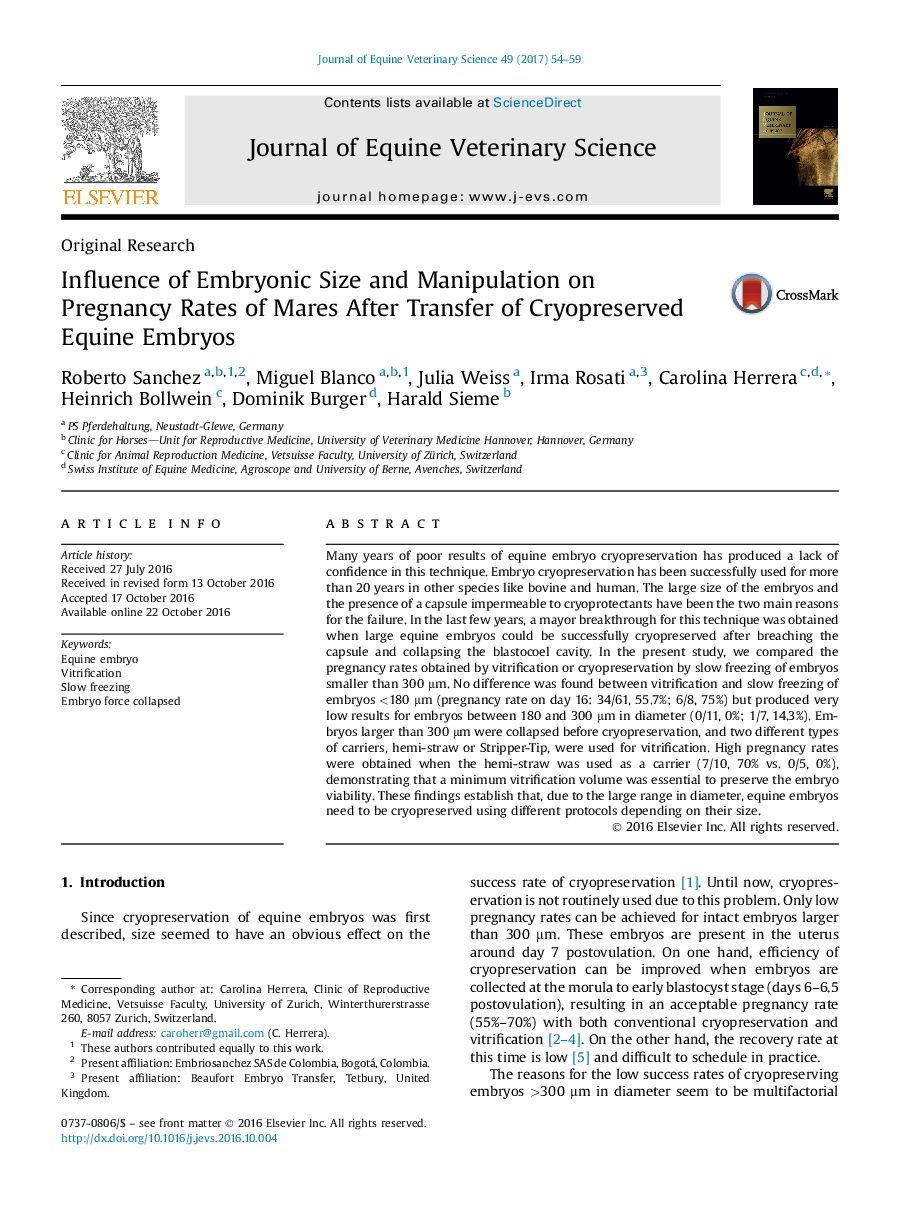| Article ID | Journal | Published Year | Pages | File Type |
|---|---|---|---|---|
| 5535694 | Journal of Equine Veterinary Science | 2017 | 6 Pages |
Abstract
Many years of poor results of equine embryo cryopreservation has produced a lack of confidence in this technique. Embryo cryopreservation has been successfully used for more than 20 years in other species like bovine and human. The large size of the embryos and the presence of a capsule impermeable to cryoprotectants have been the two main reasons for the failure. In the last few years, a mayor breakthrough for this technique was obtained when large equine embryos could be successfully cryopreserved after breaching the capsule and collapsing the blastocoel cavity. In the present study, we compared the pregnancy rates obtained by vitrification or cryopreservation by slow freezing of embryos smaller than 300 μm. No difference was found between vitrification and slow freezing of embryos <180 μm (pregnancy rate on day 16: 34/61, 55.7%; 6/8, 75%) but produced very low results for embryos between 180 and 300 μm in diameter (0/11, 0%; 1/7, 14.3%). Embryos larger than 300 μm were collapsed before cryopreservation, and two different types of carriers, hemi-straw or Stripper-Tip, were used for vitrification. High pregnancy rates were obtained when the hemi-straw was used as a carrier (7/10, 70% vs. 0/5, 0%), demonstrating that a minimum vitrification volume was essential to preserve the embryo viability. These findings establish that, due to the large range in diameter, equine embryos need to be cryopreserved using different protocols depending on their size.
Related Topics
Life Sciences
Agricultural and Biological Sciences
Animal Science and Zoology
Authors
Roberto Sanchez, Miguel Blanco, Julia Weiss, Irma Rosati, Carolina Herrera, Heinrich Bollwein, Dominik Burger, Harald Sieme,
